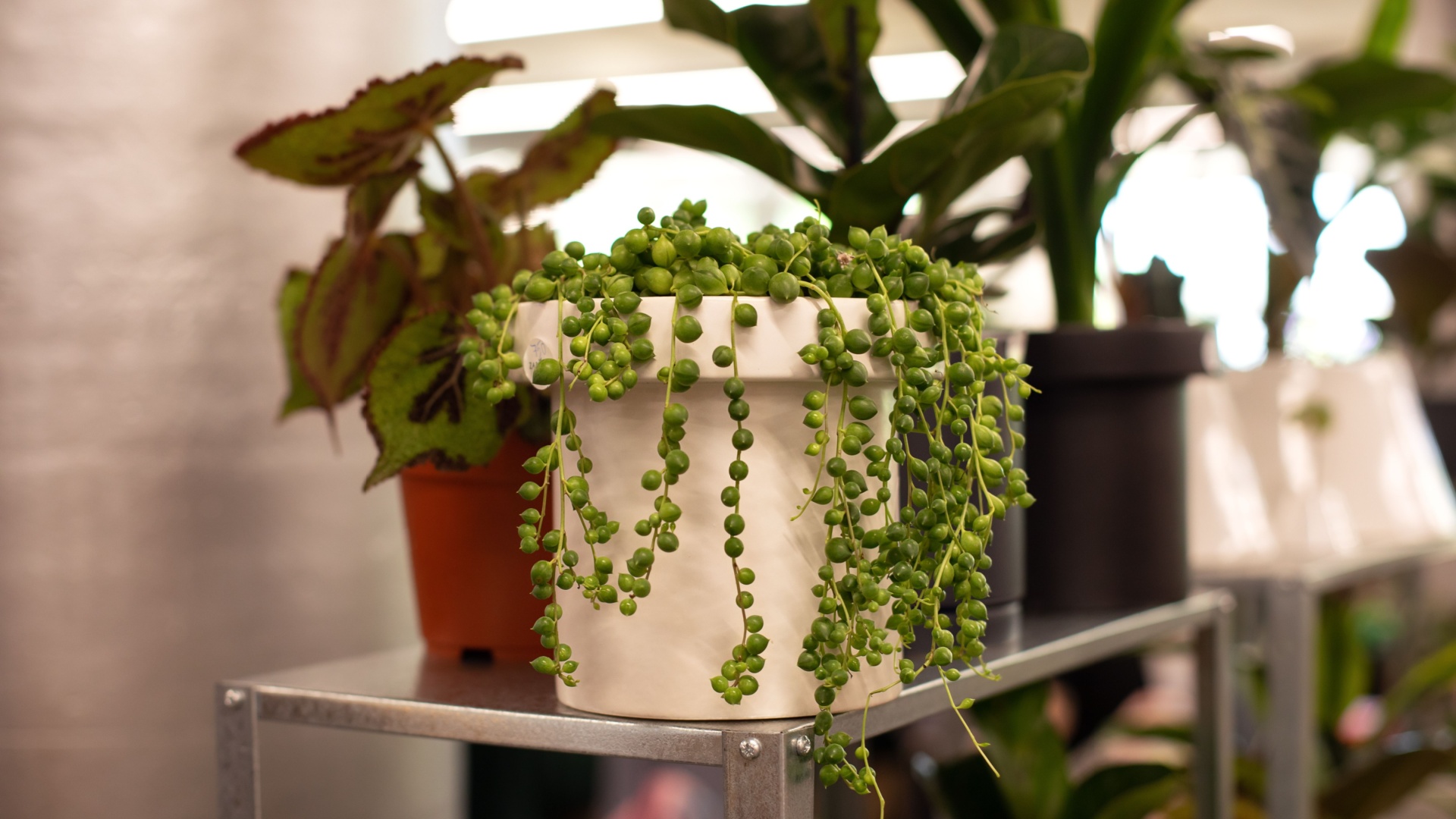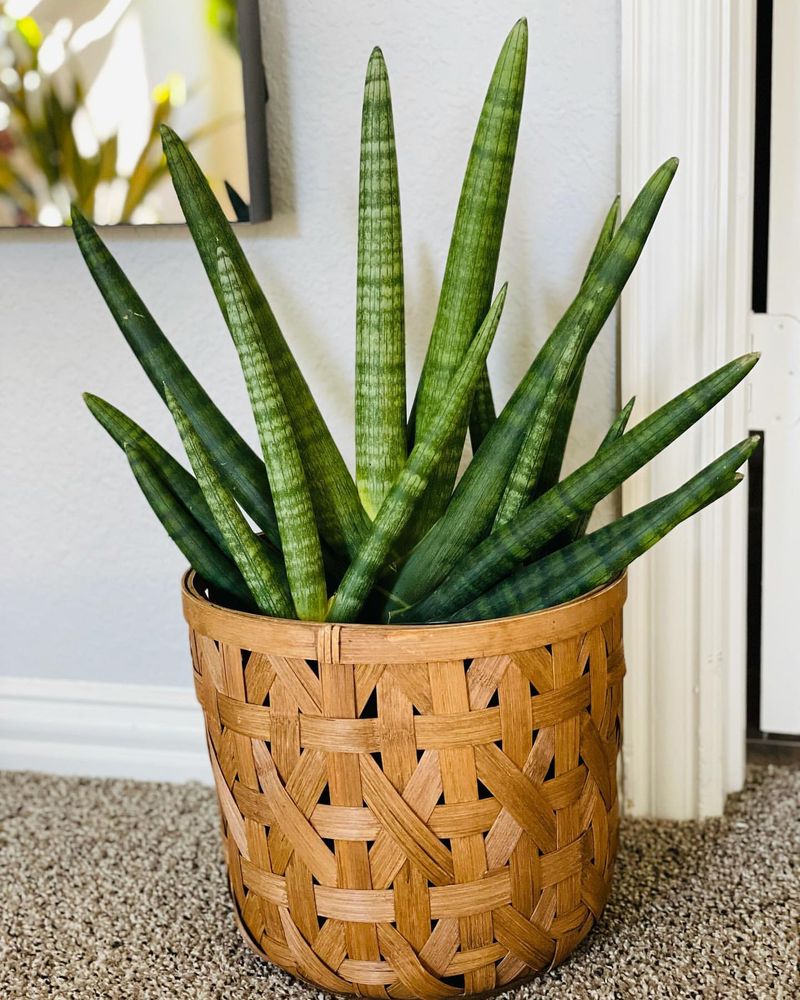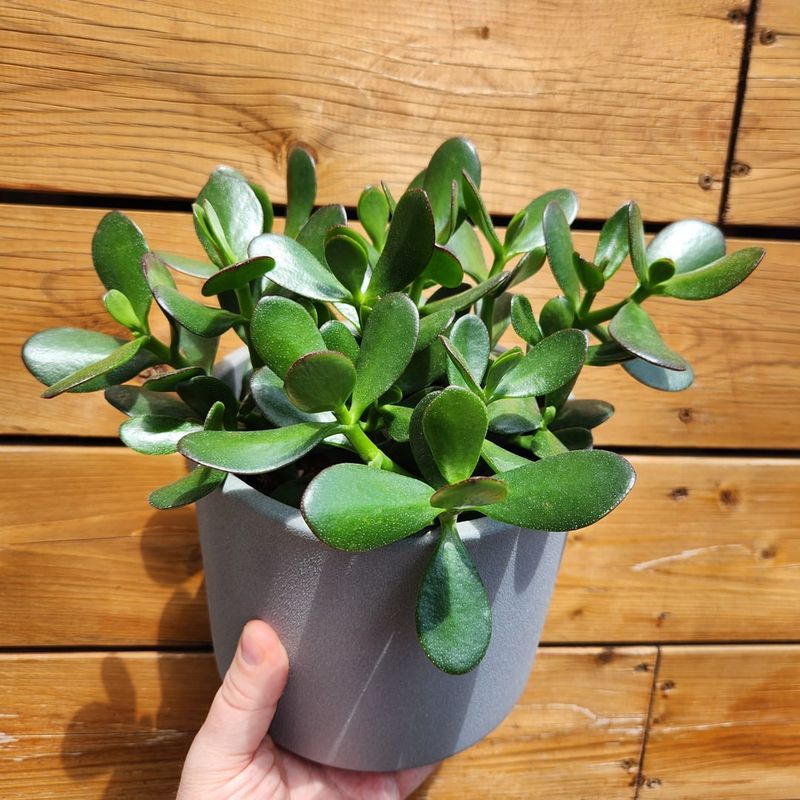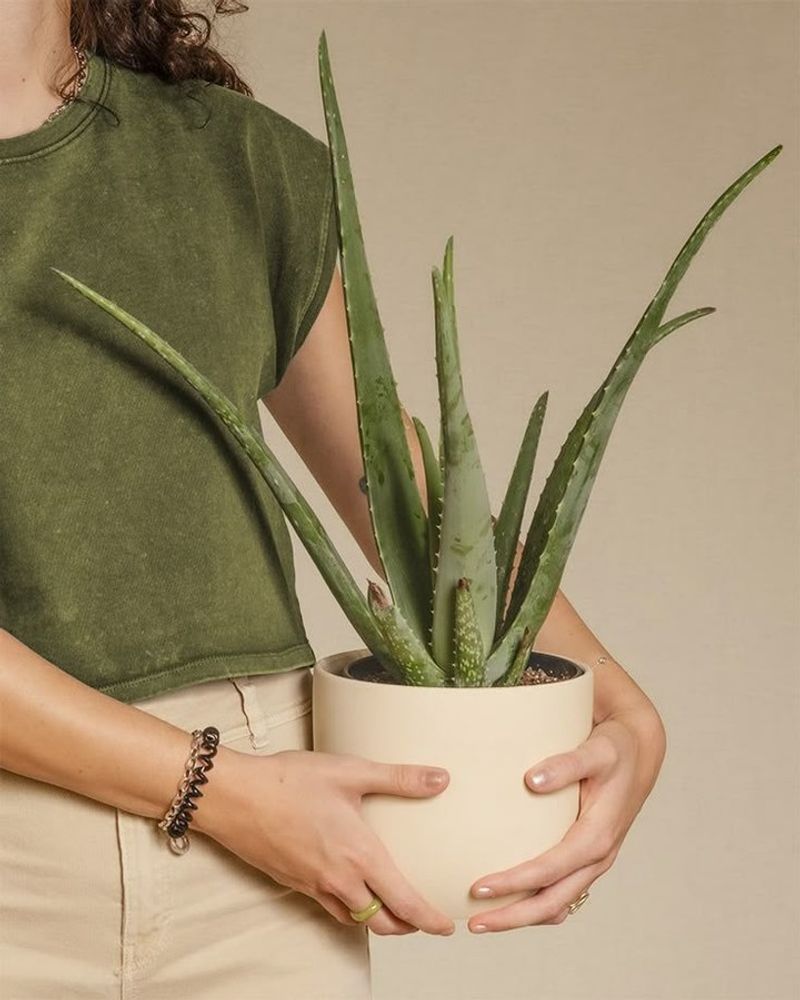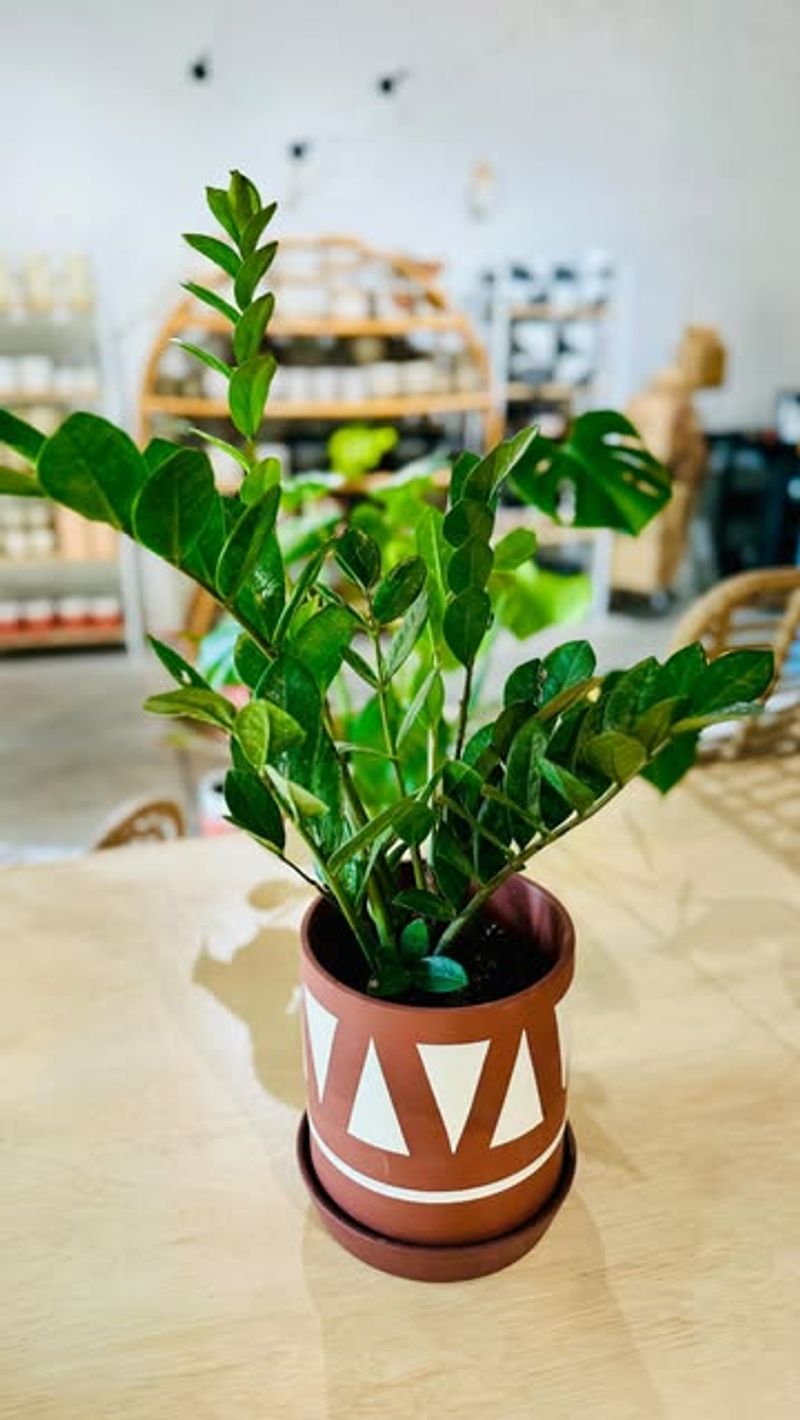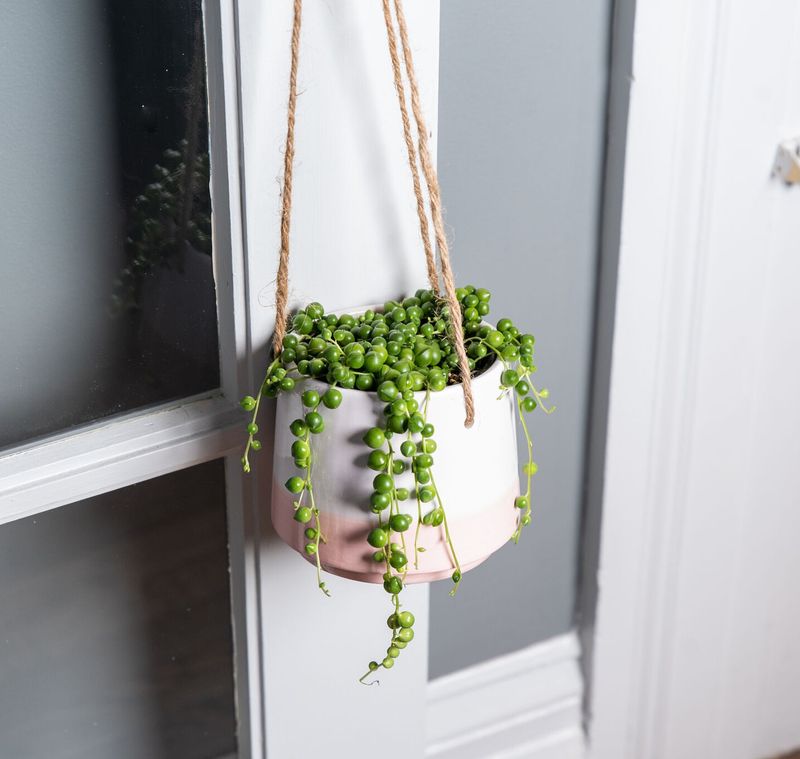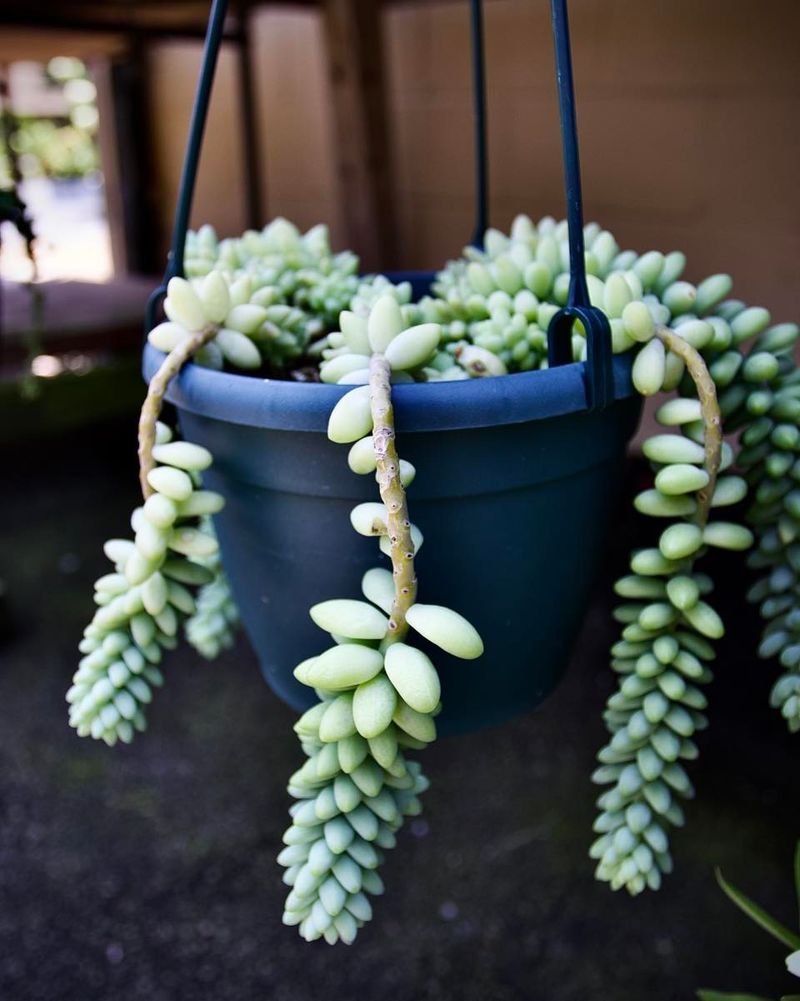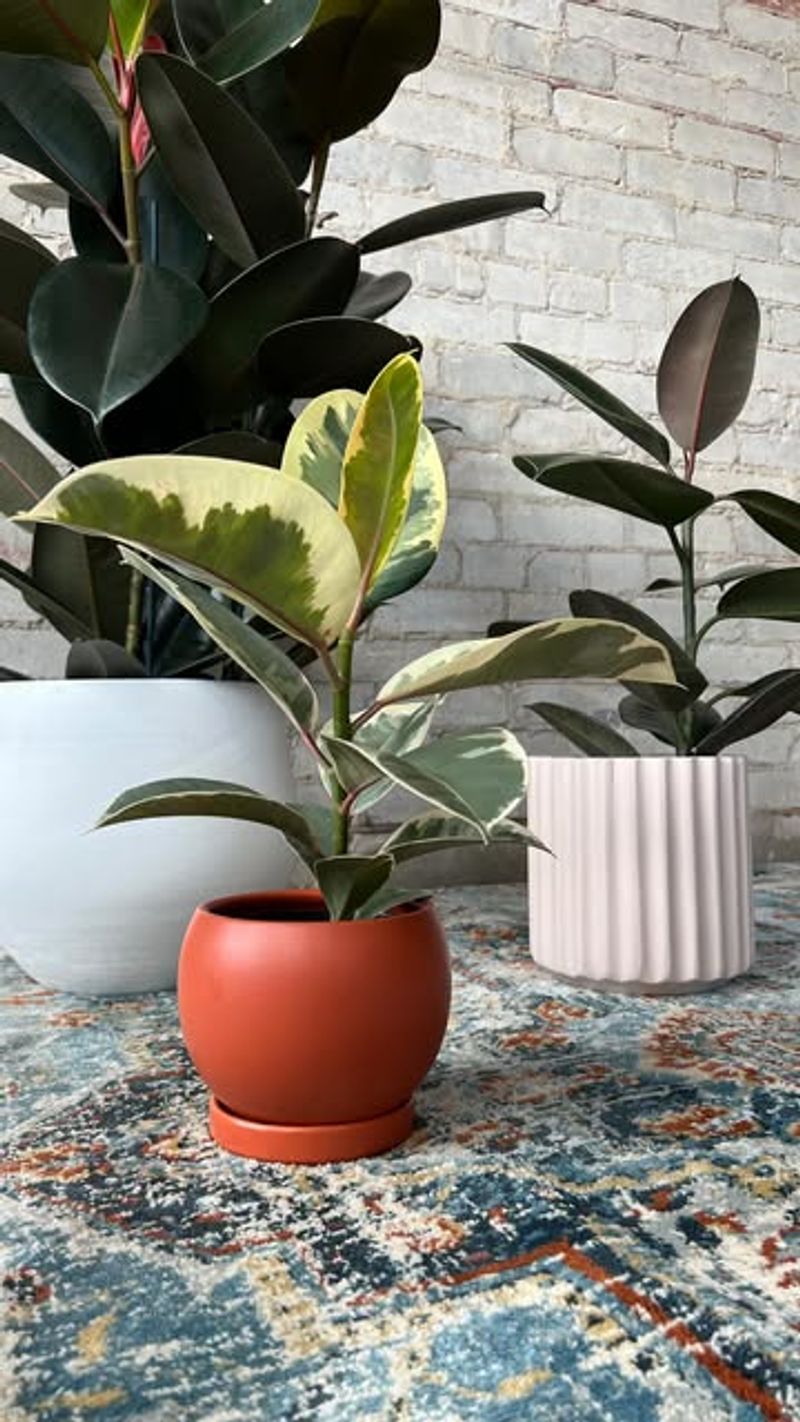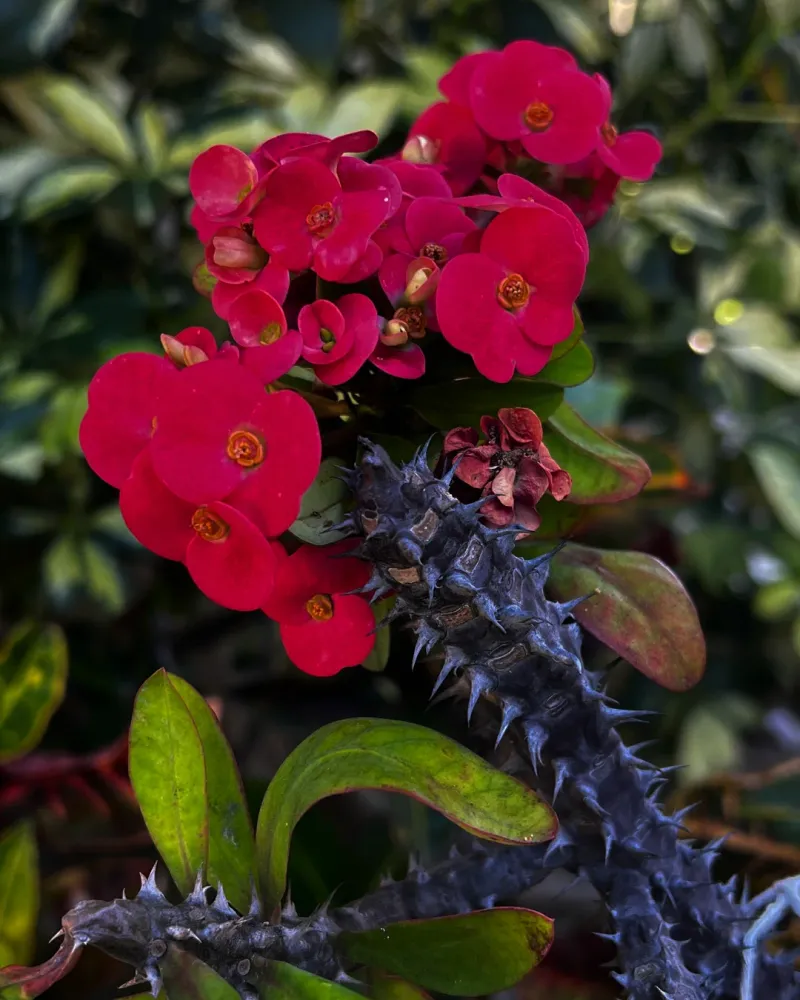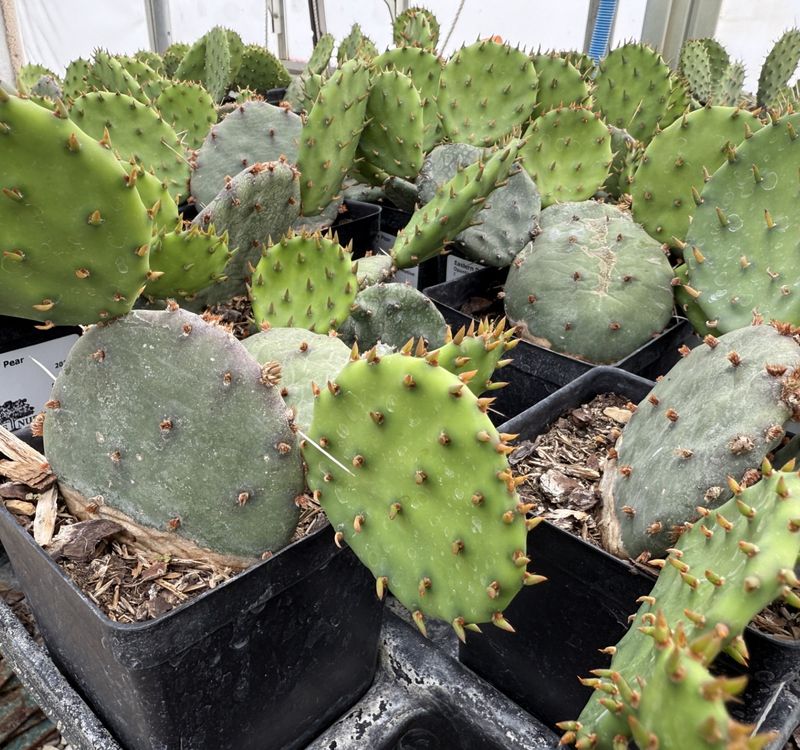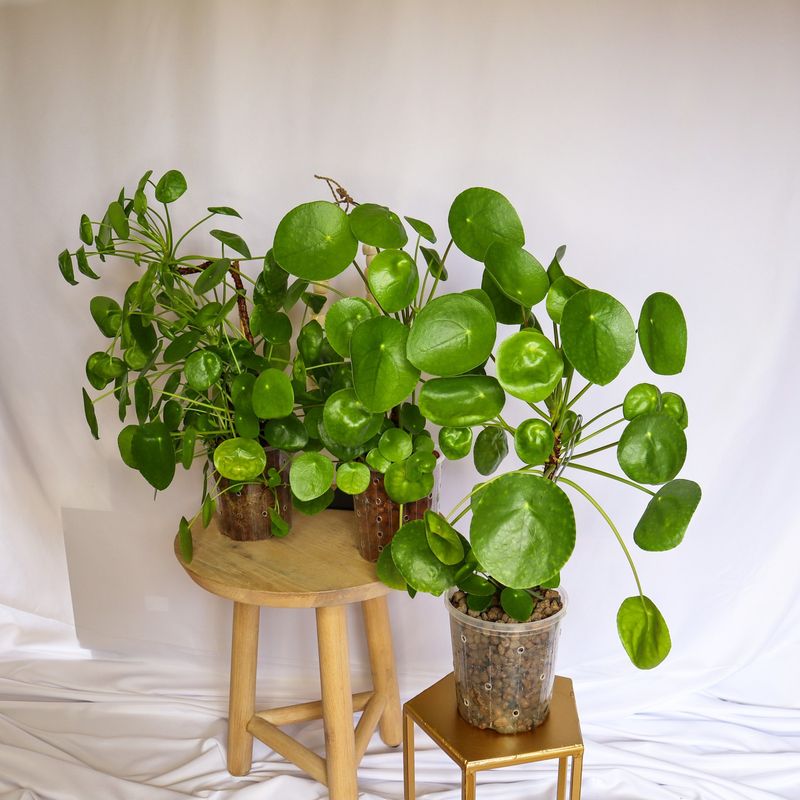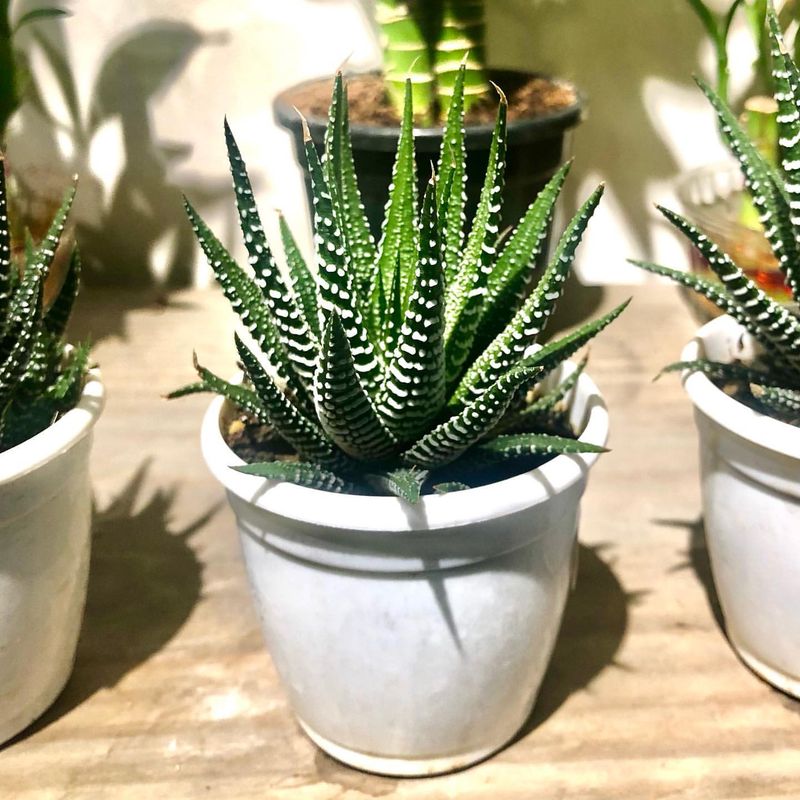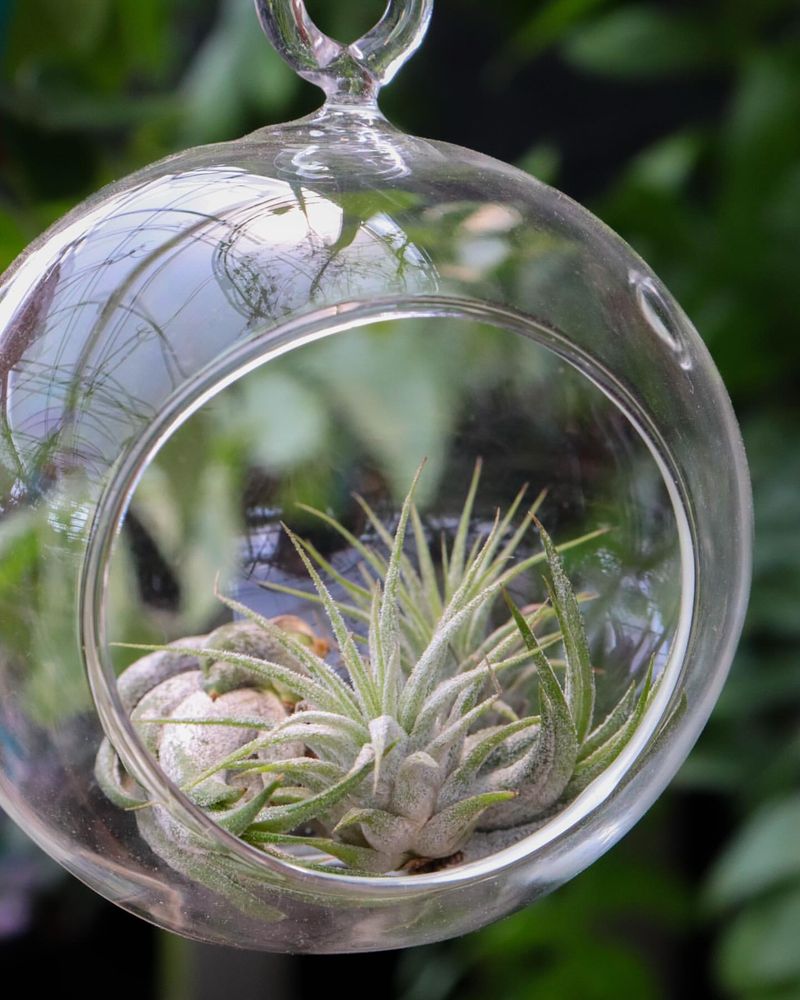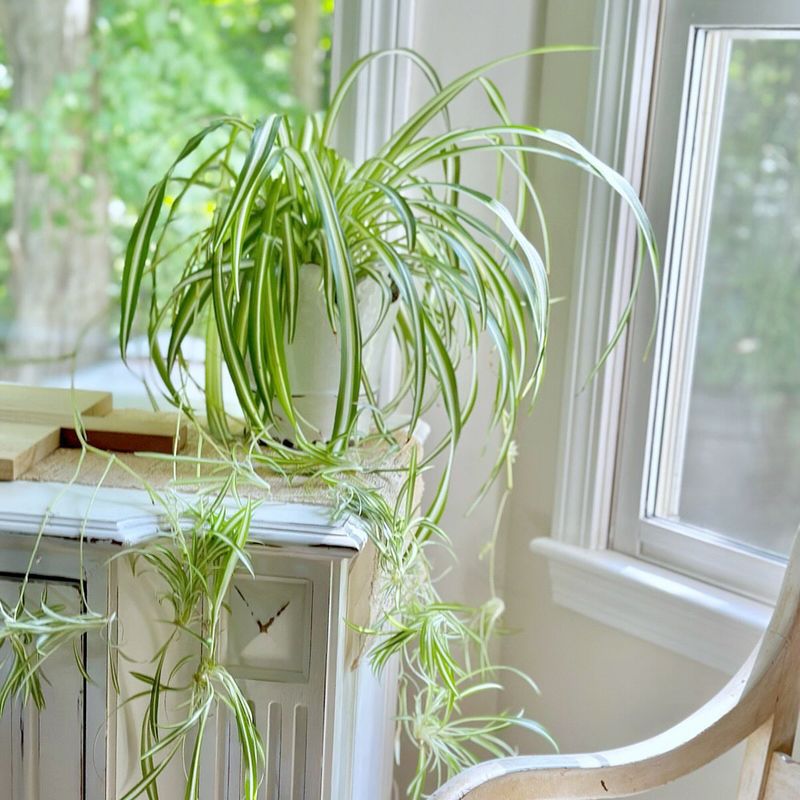Living in Colorado means dealing with dry air that can make plant care challenging. Many houseplants struggle in our arid climate, wilting away despite our best efforts.
Fortunately, some resilient green friends actually thrive in these conditions, bringing life and color to our homes without constant misting or special humidifiers.
1. Snake Plant (Sansevieria)
Virtually indestructible, snake plants stand tall with sword-like leaves that filter indoor air pollutants. Their striking vertical growth adds architectural interest to any room.
Native to West Africa’s arid regions, these plants store water in their thick leaves. Water only when soil is completely dry—about once every 2-3 weeks in winter and slightly more in summer.
Available in varieties from dwarf to towering, with leaf patterns ranging from dark green to yellow-edged, snake plants thrive even in low light corners.
2. Jade Plant (Crassula ovata)
Money trees, as jade plants are sometimes called, feature plump oval leaves and woody stems that create a miniature tree appearance. Symbolizing prosperity in many cultures, they make wonderful housewarming gifts for Colorado homes.
Sunlight transforms their leaf edges to a reddish tint, adding visual interest. Place near south-facing windows for best results, where they’ll soak up our abundant Colorado sunshine.
Water sparingly—only when the soil has completely dried out—and watch them flourish for decades.
3. Aloe Vera
Beyond its medicinal properties, aloe vera brings spiky architectural beauty to sunny windowsills. Break off a leaf and squeeze out the gel to soothe minor burns or skin irritations—nature’s first aid kit right in your living room!
Rocky soil mimics aloe’s natural desert habitat, so plant in cactus mix and ensure excellent drainage. The thick, fleshy leaves store water efficiently, making this plant perfectly adapted to Colorado’s dry conditions.
Bright indirect light produces the sturdiest plants with the most healing gel.
4. ZZ Plant (Zamioculcas zamiifolia)
Glossy, dark green leaves arranged in a herringbone pattern make ZZ plants stunning modern accents. Their waxy coating helps retain moisture in dry conditions, perfect for Colorado’s climate.
Underground potato-like rhizomes store water, allowing ZZ plants to survive weeks without attention. Thriving in low light conditions, they’re ideal for north-facing windows or office spaces away from direct sunlight.
Nearly impossible to kill, ZZ plants grow slowly but steadily, rewarding minimal care with year-round beauty.
5. Ponytail Palm (Beaucarnea recurvata)
Despite its name, ponytail palms aren’t actually palms but members of the agave family. The bulbous trunk stores water like a camel’s hump, making it perfectly suited for Colorado’s dry environment.
Long, cascading leaves flow from the top like a fountain or ponytail, creating movement and visual interest. Some specimens live for decades, slowly growing into statement pieces that anchor a room.
Place in bright spots and water sparingly—only when the soil has completely dried out.
6. String of Pearls (Senecio rowleyanus)
Cascading strands of bead-like leaves make string of pearls a conversation starter in any room. Perfectly round leaves evolved to maximize water storage while minimizing surface area—nature’s brilliant adaptation for dry environments.
Hanging baskets showcase their trailing beauty best. Place near bright windows but protect from harsh afternoon sun that might scorch their delicate pearls.
Allow soil to dry completely between waterings, then thoroughly drench. Watch for tiny white flowers that smell like cinnamon in spring!
7. Burro’s Tail (Sedum morganianum)
Rope-like stems covered in plump, overlapping leaves create living sculptures that drape beautifully from shelves or hanging planters. Each blue-green leaf stores water, making burro’s tail perfectly adapted to Colorado’s arid conditions.
Handling causes leaves to fall easily, so place where they won’t be bumped or moved frequently. South-facing windows provide ideal light, bringing out their characteristic blue-green color.
Water thoroughly but infrequently—when soil is completely dry—to prevent root rot.
8. Rubber Plant (Ficus elastica)
Large, glossy leaves in deep burgundy or variegated patterns make rubber plants dramatic focal points in Colorado homes. Their waxy coating helps them retain moisture in our dry climate while adding a reflective quality that catches light beautifully.
Originally from tropical forests, they’ve adapted surprisingly well to indoor conditions. Clean their leaves occasionally with a damp cloth to keep them dust-free and maximize their air-purifying abilities.
Allow soil to dry between waterings and watch for new leaves emerging from pink sheaths.
9. Crown of Thorns (Euphorbia milii)
Blooming nearly year-round, crown of thorns brings reliable color to Colorado homes when outdoor gardens lie dormant. Tiny flowers in red, pink, or yellow cluster above thick, spiny stems and leathery leaves.
Originally from Madagascar, these plants evolved to thrive in arid conditions similar to Colorado’s climate. Their built-in water storage system means they rarely need misting or special humidity considerations.
Place in the brightest spot available—south-facing windows are perfect—for maximum flowering. Handle carefully as the milky sap can irritate skin.
10. Prickly Pear Cactus (Opuntia)
Bringing desert charm indoors, prickly pear cacti feature flat, paddle-shaped segments that grow in interesting patterns. Native to the American Southwest, they’re perfectly at home in Colorado’s dry conditions.
Spring reveals stunning yellow, orange, or pink flowers, followed by edible purple fruits on mature plants. Some varieties develop beautiful purple hues during winter months when temperatures drop.
Extremely drought-tolerant, they need minimal water and plenty of sunlight. Use well-draining cactus soil to prevent root problems.
11. Chinese Money Plant (Pilea peperomioides)
Perfectly round leaves on slender stems create a playful, almost cartoonish appearance that brightens any Colorado home. Also called the UFO plant, these charming specimens create their own miniature forests by sending up baby plants from their roots.
Rotate regularly to keep growth even, as they lean toward light sources. Bright indirect light produces the best growth without scorching their distinctive coin-shaped leaves.
Allow soil to dry completely between waterings—typically once every 7-10 days in Colorado’s dry climate.
12. Haworthia
Resembling miniature aloe plants, haworthias feature rosettes of pointed, sometimes translucent leaves with interesting patterns and textures. Their compact size makes them perfect for small spaces like desks or bathroom shelves.
Translucent “windows” at leaf tips allow light to penetrate deeper into the plant—an adaptation from growing partially buried in their native South African habitat. This clever evolution helps them thrive in Colorado’s bright, dry conditions.
Water sparingly and provide bright indirect light for these low-maintenance gems.
13. Air Plants (Tillandsia)
No soil needed! Air plants absorb nutrients and moisture through their leaves, making them fascinating botanical oddities perfect for creative Colorado displays. Mount them on driftwood, nestle them in seashells, or place them in glass terrariums.
Despite their reputation, air plants do need water in our dry climate. Soak them in water for 30 minutes every 1-2 weeks, then shake off excess moisture and return to their display spot.
Bright indirect light brings out their silvery-green coloration and encourages occasional blooming.
14. Spider Plant (Chlorophytum comosum)
The Spider Plant is a marvel of adaptability, thriving in a range of conditions. Its long, arching leaves, adorned with white stripes, make it a visual delight.
This plant is perfect for those who may not have a green thumb. It can tolerate neglect and still flourish, making it ideal for busy homeowners.
Interestingly, the Spider Plant purifies the air by absorbing harmful pollutants. This makes it a practical and beautiful addition to any home.
15. Kalanchoe
Clusters of tiny flowers in vibrant reds, oranges, pinks, or yellows bloom for weeks above scalloped green leaves. Kalanchoes add reliable color to Colorado homes during long winter months when outdoor gardens are dormant.
After flowering ends, they continue as attractive foliage plants until the next blooming cycle. With proper care, they’ll rebloom year after year.
Bright light encourages flowering, while allowing soil to dry completely between waterings prevents common problems. Fertilize lightly during growing season for best results.

